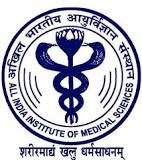预约演示
更新于:2025-05-07
Acute conjunctivitis
急性结膜炎
更新于:2025-05-07
基本信息
别名 Acute Conjunctivitis、Acute conjunctivitis、Acute conjunctivitis (disorder) + [12] |
简介 Acute inflammation of the conjunctiva. |
关联
11
项与 急性结膜炎 相关的药物作用机制 H1 receptor拮抗剂 |
在研机构 |
最高研发阶段批准上市 |
首次获批国家/地区 美国 |
首次获批日期2010-07-28 |
靶点- |
作用机制- |
在研机构 |
非在研适应症- |
最高研发阶段批准上市 |
首次获批国家/地区 日本 |
首次获批日期2002-03-15 |
作用机制 H1 receptor拮抗剂 |
原研机构 |
最高研发阶段批准上市 |
首次获批国家/地区 日本 |
首次获批日期2000-07-03 |
36
项与 急性结膜炎 相关的临床试验CTRI/2024/04/065834
Development of Padmakadi eye patch and its clinical comparative evaluation with conventional Bidalaka for anti-inflammatory activity in Anterior segment diseases- An open labelled double arm randomised comparative clinical trial. - NIL
开始日期2024-07-01 |
CTRI/2024/02/062269
A Comparative study on Antimicrobial And Clinical Effectof Trayoshanadi Anjana and itsModulated Ointment Form In EOIM ( ExternalOcular Infection Management ) wsr(with special reference) toBacterial Conjunctivitis - NIL
开始日期2024-02-12 |
申办/合作机构- |
CTRI/2023/08/056217
Efficacy of Dhatriadi Eye Drop, Shigrupatradi Eye Drop with Triphaladi Churna in the management of Amaja Abhishyanda (Acute Infective Conjunctivitis)- An open labelled randomized clinical trial. - NIL
开始日期2023-11-01 |
申办/合作机构- |
100 项与 急性结膜炎 相关的临床结果
登录后查看更多信息
100 项与 急性结膜炎 相关的转化医学
登录后查看更多信息
0 项与 急性结膜炎 相关的专利(医药)
登录后查看更多信息
382
项与 急性结膜炎 相关的文献(医药)2025-03-01·Allergy and Asthma Proceedings
Allergic comorbidities in fibromyalgia
Article
作者: Golan-Cohen, Avivit ; Magen, Israel ; Magen, Eli ; Green, Ilan ; Vinker, Shlomo ; Israel, Ariel ; Merzon, Eugene
2025-01-01·Indian Journal of Ophthalmology
Health-seeking behaviors during an outbreak of acute conjunctivitis in Central India
Article
作者: Chatterjee, Samrat ; Gangwe, Anil B ; Agrawal, Deepshikha
2025-01-01·Journal Français d'Ophtalmologie
Acute unilateral conjunctivitis as first manifestation of monkeypox viral infection after the 2023 vaccination campaign
Letter
作者: Lázaro-Rodríguez, V ; Gil, M A ; Caminal-Caramés, M ; Conversa, S ; Sabater-Cruz, N ; Saladrigas, A ; Del Campo, Z
4
项与 急性结膜炎 相关的新闻(医药)2024-03-01
·医药观澜
▎药明康德内容团队编辑2月28日,艾威药业(IVIEW Therapeutics)宣布将在2024年ARVO(视觉和眼科研究协会)会议上公布IVIEW-1201(1.0%聚维酮碘眼用凝胶无菌溶液)治疗急性细菌性结膜炎的2期临床研究的积极顶线结果。该报告定于2024年5月7日上午9:15进行口头报告。感染性结膜炎是眼科门诊的常见病和多发病,主要由病毒或细菌感染引起。目前,常规治疗以抗生素为主或联合其他药物。然而,临床很难区分细菌和病毒感染,临床上急需一种能够治疗任何感染源(如病毒和细菌)的药物来治疗常见的急性结膜炎(“红眼病”)。IVIEW-1201是采用艾威药业的i-Gel原位凝胶技术开发的缓释聚维酮碘滴眼液,其杀菌机制是通过氧化病原体原浆蛋白的活性基团,并与蛋白质的氨基结合而使其变性,从而有效杀灭细菌、病毒、真菌等病原体。IVIEW-1201滴入眼表后,由于眼泪里阳离子强度的增加而形成弱凝胶附着在眼球表面,使得药物避免被眼泪迅速冲刷掉从而实现缓释的效果;同时它还有一个特殊的性能——触变性,即眨眼带来的外力扰动可以让弱凝胶水化,这种可逆相变过程避免传统凝胶剂型存在的糊视问题,同时降低对眼睛的局部刺激性。据艾威药业新闻稿介绍,即将在2024年ARVO会议上口头报告的是一项于最近完成的2期、多中心、盲法、随机、平行对照临床研究,旨在评估IVIEW-1201与氧氟沙星滴眼液在治疗急性细菌性结膜炎方面的临床疗效和安全性。该临床试验获得美国FDA和中国NMPA批准,并由山东第一医科大学附属眼科医院院长及首席研究员史伟云博士和王婷博士领导,在中国12个中心招募了129名患者。试验结果显示,IVIEW-1201达到了不劣于氧氟沙星滴眼液的预定主要终点(第8天的临床治愈率)。值得注意的是,在基线期细菌培养阴性的感染性结膜炎受试者中,IVIEW-1201显示出优于氧氟沙星滴眼液的临床治愈率。此外,IVIEW-1201也在该试验中显示出了良好的安全性和耐受性。加利福尼亚州Scripps Health医疗集团角膜和外眼部疾病主任兼屈光手术联合主任Francis Mah医学博士是该临床试验方案的主要设计者。Mah博士评论道:“我很高兴向眼科界报告这项临床2期试验的Topline顶线数据,在与监管机构讨论后,我期待与该公司合作开展未来的关键的注册临床试验。”艾威药业联合创始人、董事长兼首席执行官梁波博士评论道:“IVIEW-1201是一种广谱非抗生素创新滴眼液,有潜力能广谱治疗病毒性和细菌性结膜炎,而不会产生潜在耐药性。如果IVIEW-1201被成功开发用于治疗感染性结膜炎,它将为眼表感染提供一种创新的解决方案,并填补了未被满足的医疗需求的重大空白。"据悉,除了上述口头论文演讲之外,艾威药业的3份Poster Presentation报告也将在ARVO 2024会议上展出,涉及治疗急性结膜炎的长效原位凝胶滴眼液的开发、基于AAV的新型青光眼基因疗法,以及治疗干眼症的新型眼科眼睑擦的非临床开发研究。▲药明康德内容团队专访梁波博士艾威药业是一家专注于创新眼科治疗的临床阶段生物技术公司,致力于追求创新科学,从而推出满足未满足的医疗需求的差异化产品。目前,该公司的创新小分子和基因治疗产品组合涵盖干眼症、近视、结膜炎、青光眼、老视等眼科疾病。艾威药业联合创始人、董事长兼CEO梁波博士曾在介绍药明康德内容团队采访时表示:“我认为,未来10年,无论是创新小分子、生物大分子及细胞和基因治疗等新分子类型,还是新的制剂技术和给药手段,都会迎来繁荣的发展,从而为更多眼科患者带来光明。”参考资料:[1] IVIEW宣布在即将召开的2024年ARVO全国会议上公布IVIEW-1201治疗急性细菌性结膜炎的II期临床研究的积极顶线结果. Retrieved Feb 29, 2024, from
https://mp.weixin.qq.com/s/esFUvYK-YBrEdY0fLG_GRQ本文由药明康德内容团队根据公开资料整理编辑,欢迎个人转发至朋友圈。转发授权请在「医药观澜」微信公众号留言联系我们。其他合作需求,请联系wuxi_media@wuxiapptec.com。免责声明:药明康德内容团队专注介绍全球生物医药健康研究进展。本文仅作信息交流之目的,文中观点不代表药明康德立场,亦不代表药明康德支持或反对文中观点。本文也不是治疗方案推荐。如需获得治疗方案指导,请前往正规医院就诊。
临床2期微生物疗法
2023-09-01
·医药观澜
▎药明康德内容团队报道9月1日,艾威药业(IVIEW Therapeutics)发布新闻稿称,IVIEW-1201(1.0%聚维酮碘眼用凝胶无菌溶液)在中国进行的急性细菌性结膜炎2期临床试验,已顺利完成所有受试者的入组。 急性结膜炎(也被称为红眼病)是美国、亚洲和欧洲常见和极具传染性的眼科感染性疾病,也是导致眼部发病、流行性眼部感染、丧失生产力、使患者不适的主要原因。而急性细菌性结膜炎是常见的眼部感染性疾病,可以发生在不同年龄、不同性别、不同地域和不同社会阶层的人群中。IVIEW-1201是采用艾威药业独特的i-Gel原位凝胶技术开发的缓释聚维酮碘滴眼液,其杀菌机制是通过氧化病原体原浆蛋白的活性基团,并与蛋白质的氨基结合而使其变性,从而有效杀灭细菌、病毒、真菌等病原体。IVIEW-1201滴入眼表后,由于眼泪里阳离子强度的增加而形成弱凝胶附着在眼球表面,使得药物避免被眼泪迅速冲刷掉从而实现缓释的效果;同时它还有一个特殊的性能——触变性,即眨眼带来的外力扰动可以让弱凝胶水化,这种可逆相变过程避免传统凝胶剂型存在的糊视问题,同时降低对眼睛的局部刺激性。此次完成全部受试者入组的2期临床是一项多中心、随机、以氧氟沙星滴眼液为阳性对照的研究,旨在评估IVIEW-1201治疗急性细菌性结膜炎的疗效和安全性。该研究由山东第一医科大学附属眼科医院(山东省眼科医院)史伟云院长和王婷院长担任主要研究者,在中国12家研究中心共入组129名受试者。艾威药业创始人、董事长兼首席执行官梁波博士表示,他们将于2023年第四季度获得该项2期临床试验的全部数据。同时,IVIEW-1201用于治疗病毒结膜炎的全球多中心2期临床试验在中国和印度同步进行,受试者招募已进入最后阶段。▲药明康德内容团队专访梁波博士艾威药业是一家处于临床开发阶段的眼科创新药物研发公司。该公司创新的小分子和基因治疗产品管线组合涵盖干眼症、近视眼、急性结膜炎、青光眼、老花眼等疾病。据梁波博士在此前接受药明康德内容团队采访时介绍:“未来10年,无论是创新小分子、生物大分子及细胞和基因治疗等新分子类型,还是新的制剂技术和给药手段,都会迎来繁荣的发展,从而为更多眼科患者带来光明。”参考资料:[1]艾威药业IVIEW-1201(1.0%聚维酮碘眼用凝胶无菌溶液)II期临床研究完成全部受试者患者入组. Retrieved Sep 1 ,2023. From https://mp.weixin.qq.com/s/FysHdCHpqerHC6H3rn7AkA本文由药明康德内容团队根据公开资料整理编辑,欢迎个人转发至朋友圈。转发授权请在「医药观澜」微信公众号留言联系我们。其他合作需求,请联系wuxi_media@wuxiapptec.com。免责声明:药明康德内容团队专注介绍全球生物医药健康研究进展。本文仅作信息交流之目的,文中观点不代表药明康德立场,亦不代表药明康德支持或反对文中观点。本文也不是治疗方案推荐。如需获得治疗方案指导,请前往正规医院就诊。
临床2期临床1期微生物疗法基因疗法
2022-11-19
·医药观澜
▎药明康德内容团队报道2021年10月,发现“感知温度和触觉受体”的两位科学家摘得了诺贝尔生理学或医学奖,该领域的发现为疾病治疗研究带来新的方向,也引发了更为广泛的关注。其中,TRPM8受体就是较早被发现的温度感受受体之一。“TRPM8是一种在感觉寒冷时能被激活的受体,针对该靶点开发激动剂可以促进眼泪分泌,迅速改善干眼症症状。这与现有的抗炎症、抗氧化产品及人工泪液有所不同,也代表着治疗干眼症的一种创新机制。”艾威药业联合创始人、董事长兼首席执行官梁波博士近期在接受采访时表示。 艾威药业(IVIEW Therapeutics)于2015年底在美国宾州成立,由制药行业资深人士John J. Baldwin博士和梁波博士创立,旨在通过开发创新眼科疗法以改善患者视力。目前,艾威药业已在多个疾病领域建立研发管线,其中干眼症在研新药IVW-1001正是一款TRPM8受体激动剂,目前已完成概念验证临床试验并取得积极数据,预计将于明年进入2期临床;另一款结膜炎广谱治疗药物IVIEW-1201正在全球同步开展国际多中心2期临床试验,治疗病毒性结膜炎和细菌性结膜炎。此外,该公司还针对眼部给药的难点开发创新的递送平台,从而挖掘已知分子或新化合物在眼科疾病中的治疗潜力。当下,眼科疾病的治疗方式和药物开发面临哪些关键挑战?艾威药业的创新技术和产品能解决其中哪些难题?未来该领域会迎来哪些变革性疗法?在本次访谈中,梁波博士对这些话题进行了探讨。梁波博士曾先后取得北京大学学士学位、宾夕法尼亚大学有机化学博士学位及纽约大学NYU Stern商学院MBA,他也是一位资深药物研发科学家和连续创业者,拥有数十年药物研发和生物技术开发经验。 图片来源:艾威药业提供,药明康德内容团队制作药明康德内容团队:在眼科疾病领域,当前治疗方式或临床解决方案还面临哪些关键挑战? 梁波博士:总的来说,眼科疾病领域目前面临的挑战主要有两个。一是未被满足的临床需求明显,包括以干眼症、近视眼、老花眼、结膜炎为代表的眼表疾病,以及以黄斑病变、视网膜病变、视神经病变等为代表的眼底疾病。这也是一个常常被忽视的疾病领域,有些疾病目前还没有获批的药物可用,有些虽然有药品但却存在起效慢、安全性不高、长期使用出现耐药等问题。二是疾病的作用机制不够明确,开发针对性的创新疗法仍然存在较大挑战。所以,这个领域不仅需要更多全新分子机制或者真正具有变革性的创新疗法,也需要新的递送手段来优化现有产品的疗效和安全性,从而帮助患者改善症状甚至是获得治愈。药明康德内容团队:艾威药业的新技术和研发管线有助于解决这些挑战吗?它与现有方法有何区别? 梁波博士:凭借艾威药业专业的临床眼科医生团队,我们每一个项目立项时都会着重考虑两点:第一,是否真正存在未满足的临床需求,公司能否用创新的化合物或者是创新的递送手段,真正为患者带来临床获益。第二,是否在未来实现商业化时具备一定差异化优势,这影响了将来患者、医生和保险支付体系是否愿意接受这款产品。因此,艾威药业一方面正在开发全新的分子类型。比如干眼症新药IVW-1001,正是基于冷感受器开发的一款TRPM8受体激动剂。TRPM8(瞬时受体电位M8)是一种冷敏感受体,它们能够感知因为眼泪挥发导致的角膜温度下降,提高该受体活性可以增加基线的眼泪分泌和眨眼的频率。在韩国开展的概念验证临床试验(POC)数据显示,IVW-1001用药一周即起效,可快速促进泪腺分泌泪液,从而直接对症治疗,明显改善患者症状。目前,公司正在快速推进IVW-1001的临床试验,预计将于明年二季度进入2期临床。该产品也具有成为“best-in-class”新药甚至是“first-in-class”新药的潜力。此外,艾威药业还开发了一种创新的给药手段——眼睑用药,就像在涂睫毛膏,具有安全性好、无刺激性、使用方便等特点。另一方面,艾威药业也在开发创新的递送平台。以原位凝胶缓释技术为例,它可以使产品滴在眼表后,由于眼泪里离子强度的改变而形成弱凝胶附着在眼球表面,这能够使产品避免被眼泪冲刷进而实现缓释的效果。同时,它还有一个特殊的性能——触变性,即眨眼带来的外力咬动可以让弱凝胶水化,这种可逆相变过程可避免传统剂型存在的糊视问题,同时降低对眼睛的局部刺激性。基于这项技术,团队开发了一款急性结膜炎一线治疗产品IVIEW-1201,并已在临床前研究中表现出对病毒和细菌的广谱杀灭作用,同时它还具备刺激性小、毒性低、效果持久、安全好等特点。在印度开展的2a期临床试验中,IVIEW-1201展示了良好的安全性和耐受性。目前该产品2b期国际多中心临床正在印度和中国同时开展,治疗病毒性结膜炎和细菌性结膜炎两个适应症。 药明康德内容团队:展望未来几年,您预期艾威药业在研发管线方面会迎来哪些里程碑进展? 梁波博士:针对眼科疾病领域巨大未满足的临床需求,艾威药业不仅开发了全新的小分子,创新的制剂技术,同时也开始探索细胞和基因治疗(CGT)在眼科常见疾病中的应用。随着艾威药业产品管线的陆续开发,到2023年底或2024年初,我们的结膜炎新药IVIEW-1201将进入3期临床,干眼症治疗产品IVW-1001将进入2期临床,治疗近视眼的1类新药IVW-1802将进入2期临床,以及基因治疗项目将递交pre-IND。药明康德内容团队:您如何看待当前中国的创新药发展?您对未来几年的预判是什么? 梁波博士:最近几年,中国的创新药尤其是抗肿瘤新药的发展非常迅速,真正为患者带来了很多挽救生命的好产品,这点我感受非常深刻。我相信,随着相关政策继续鼓励和引导创新,汇聚更多优秀人才,以及资本的持续支持助力等,创新药领域还会取得更多新突破。另外,开发真正具有差异化的、具临床价值的产品,我认为应该走好全球化路线,从而惠及更广泛的患者群体。药明康德内容团队:您如何看待“合作”在当下生物医药创新生态中的作用和影响? 梁波博士:术业有专攻。无论是从提高研发质量和效率等方面考虑,还是从节约成本的方面考虑,合作都是当前创新药开发最合适的一条路。尤其是对于艾威药业这种小型生物技术公司而言,合作是一种双赢的选择,可以将有限的资源合理分配到最需要的地方。未来,我们也会继续加强对外合作,并在全球积极寻求创新业务的发展机会,引进早期临床开发阶段的创新药物或者将公司的创新产品部分权益授出。药明康德内容团队:在眼科疾病领域,您认为未来10年会迎来哪些变革性疗法?梁波博士:与肿瘤等致命性疾病需要挽救患者生命的创新药不同,眼科疾病的患者更需要改善生活质量的产品。开发眼科新药一般是局部用药,安全性较好,同时在临床试验方面也更为简单和直接,一些产品可以基于良好的临床前数据直接在美国获批进入2期临床。我认为,未来10年,无论是创新小分子、生物大分子及细胞和基因治疗等新分子类型,还是新的制剂技术和给药手段,都会迎来繁荣的发展,从而为更多眼科患者带来光明。药明康德内容团队:作为中国创新药领域的创新创业者,您还有哪些观点和声音希望向业界传递?梁波博士:新药研发是一件漫长且充满未知的旅程,每一款候选药未来能否被成功开发出来也未可知。在我看来,创业要选择令自己内心感到兴奋的疾病领域,才能一直在工作中保持热情。当下生物医药公司有各种各样的商业模式,虽说成功自有理由,但我觉得最重要的还是要把基础打好。正如《From Good To Great》这本书所说,想成为一家优秀的公司比较容易,但要成为一家卓越的真正具有国际影响力的公司却很难。如果想要开发出真正的好产品,就必须把科学和创新做好。艾威药业官网上写着:Bright Science,Clear Vision,我们希望成为一家科学驱动且具有清晰视野的新药研发公司,为全球患者带来改善视力的创新眼科药物。生物医药行业新年展望调研尊敬的读者朋友,不知不觉间,2022年已进入尾声,感谢大家又一年的陪伴。这一年,生物医药行业在前进中迈入了新的发展阶段。在传统的小分子化学药和单抗、蛋白质类生物药之外,一系列全新类型的疗法正在成为热点,有望加速为全球患者带来突破,改写未来的治疗格局。展望新年,为更全面地了解生物医药行业的朋友对于产业发展的观点和洞察,我们特邀请您在百忙之中花1分钟填写这份调查问卷。根据调查结果,您关注的问题将有机会在药明康德2023年新春线上活动中得到深入探讨。调研截止时间为2022年11月20日24点整。为感谢大家的支持,我们将随机抽取15位参与者,赠送2023新春精美文创礼盒1份(含春联、福字等近10种品种)。扫描二维码填写问卷 本文来自药明康德内容团队,欢迎个人转发至朋友圈,谢绝媒体或机构未经授权以任何形式转载至其他平台。转载授权请在「医药观澜」微信公众号留言联系我们。其他合作需求,请联系wuxi_media@wuxiapptec.com。免责声明:药明康德内容团队专注介绍全球生物医药健康研究进展。本文仅作信息交流之目的,文中观点不代表药明康德立场,亦不代表药明康德支持或反对文中观点。本文也不是治疗方案推荐。如需获得治疗方案指导,请前往正规医院就诊。
临床2期
分析
对领域进行一次全面的分析。
登录
或

生物医药百科问答
全新生物医药AI Agent 覆盖科研全链路,让突破性发现快人一步
立即开始免费试用!
智慧芽新药情报库是智慧芽专为生命科学人士构建的基于AI的创新药情报平台,助您全方位提升您的研发与决策效率。
立即开始数据试用!
智慧芽新药库数据也通过智慧芽数据服务平台,以API或者数据包形式对外开放,助您更加充分利用智慧芽新药情报信息。
生物序列数据库
生物药研发创新
免费使用
化学结构数据库
小分子化药研发创新
免费使用



